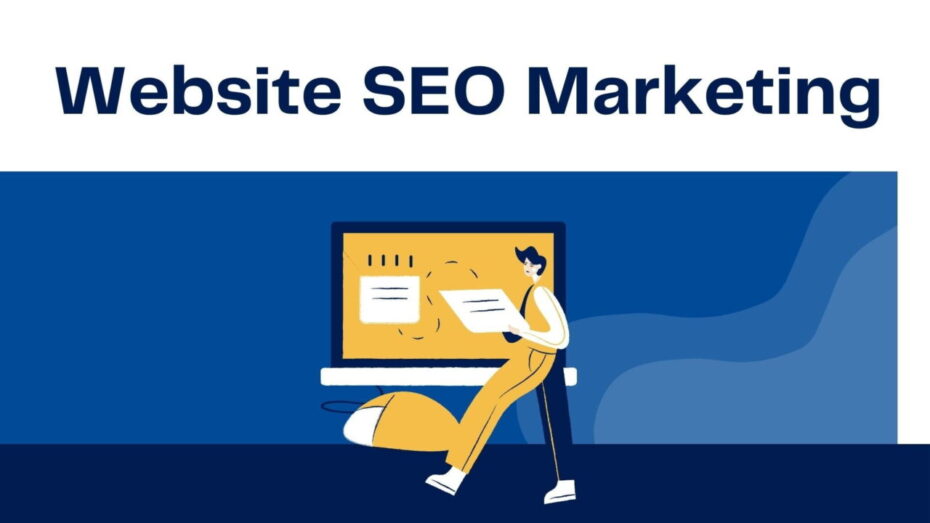In this guide, we’ll explore effective strategies for website SEO marketing. Discover easy ways to optimize your site and improve your search engine rankings.
Understanding Website SEO Marketing Basics
Understanding website SEO marketing is crucial for anyone looking to enhance their online presence. From my perspective, grasping the fundamentals of SEO can significantly impact your website’s success. By leveraging these basics, you can drive more organic traffic, improve search engine rankings, and ultimately achieve your business goals.
Website SEO marketing involves optimizing various elements of your website to make it more attractive to search engines. This process includes on-page and off-page strategies, technical SEO, and continuous performance monitoring. I strongly believe that mastering these basics will set a solid foundation for your SEO efforts.
SEO Services Recommendations
What Is Website SEO Marketing?
Website SEO marketing is the practice of optimizing your website to rank higher in search engine results pages (SERPs). It involves a combination of techniques designed to improve your site’s visibility and attract more organic traffic. Speaking personally, I find that a well-optimized website not only attracts visitors but also enhances their overall experience.
To start, you’ll want to focus on on-page SEO, which includes optimizing your content, meta tags, and images. This ensures that search engines understand what your site is about and can index it correctly.
My recommendation is to also incorporate off-page SEO strategies like building quality backlinks and engaging in social media marketing. These efforts help to increase your site’s authority and drive more traffic from external sources.
Another key component of website SEO marketing is technical SEO. This involves improving your site’s speed, ensuring mobile compatibility, and using structured data to help search engines better understand your content. From my point of view, investing time in technical SEO can yield significant long-term benefits.
Importance of SEO for Website Success
In my opinion, SEO is vital for the success of any website. It not only helps you reach a broader audience but also ensures that your site remains competitive in the ever-evolving digital landscape. According to industry experts, websites that rank higher in search results tend to receive the majority of clicks, which translates to increased traffic and potential conversions.
I suggest focusing on creating high-quality, relevant content that addresses your audience’s needs and interests. This not only improves your SEO but also establishes your site as a valuable resource. From my perspective, regularly updating your content and optimizing it for target keywords can significantly boost your search engine rankings.
Moreover, a well-executed SEO strategy can enhance user experience by making your site more accessible and easier to navigate. My advice is to prioritize site speed, mobile-friendliness, and intuitive design. These factors contribute to a positive user experience, which search engines reward with higher rankings.
Finally, monitoring and analyzing your SEO performance is crucial. Use tools like Google Analytics and Search Console to track your progress and identify areas for improvement. I hold the opinion that continuously refining your SEO strategy based on data insights is key to sustaining long-term success.
By understanding and implementing effective website SEO marketing practices, you can achieve a competitive edge and ensure the ongoing success of your online presence.
Essential On-Page SEO Techniques
Mastering on-page SEO techniques is crucial for improving your website’s search engine rankings. From my perspective, focusing on these elements can make your site more accessible and engaging for visitors. My suggestion is to implement these strategies thoughtfully to achieve the best results.
On-page SEO includes optimizing content, titles, meta descriptions, headers, and images. I recommend paying close attention to each aspect to ensure your website is fully optimized. By doing so, you’ll enhance user experience and increase your chances of ranking higher in search engine results.
Crafting SEO-Friendly Titles and Meta Descriptions
Crafting SEO-friendly titles and meta descriptions is essential for attracting search engine users. In my opinion, your title should be compelling and include your primary keyword naturally. This helps search engines understand the topic of your page and entices users to click on your link.
For meta descriptions, I suggest writing a concise summary of your page’s content, incorporating related keywords without keyword stuffing. From my perspective, a well-written meta description can significantly improve your click-through rate (CTR). I strongly believe that investing time in creating effective titles and meta descriptions is key to successful website SEO marketing.
Additionally, it’s important to keep your titles and meta descriptions within the recommended character limits. Titles should be around 50-60 characters, while meta descriptions should be 150-160 characters. This ensures that your content displays correctly in search engine results, providing a better user experience.
Updating your titles and meta descriptions regularly is another strategy I recommend. As search trends evolve, adjusting your SEO strategy to align with current trends can help maintain or improve your rankings. According to experts, this proactive approach can keep your content relevant and engaging for your audience.
Using Headers and Subheaders Effectively
Using headers and subheaders effectively can greatly enhance your on-page SEO. I’m of the view that clear and descriptive headers make your content more readable and organized. This not only helps users navigate your page but also allows search engines to understand the structure and hierarchy of your content.
My advice is to incorporate your primary and related keywords naturally within your headers and subheaders. This provides search engines with context about your content’s main topics. I believe that strategic placement of keywords in headers can boost your SEO efforts significantly.
Headers and subheaders also break up your content into manageable sections, improving readability. From my point of view, this keeps readers engaged and encourages them to spend more time on your site. I suggest using H1 for your main title, followed by H2 for primary sections and H3 for sub-sections.
Additionally, using headers effectively can improve your chances of earning featured snippets. These snippets are highlighted boxes of content that appear at the top of search results, providing a quick answer to users’ queries. In my opinion, optimizing your headers for featured snippets can drive more organic traffic to your site.
Optimizing Images for Better SEO
Optimizing images is a crucial aspect of on-page SEO that should not be overlooked. I hold the opinion that well-optimized images can enhance user experience and improve your site’s loading speed, both of which are important ranking factors.
Firstly, I recommend using descriptive, keyword-rich file names for your images. This helps search engines understand the content of the image. Additionally, adding alt text to your images provides a text alternative for search engines and improves accessibility for visually impaired users.
Compressing images to reduce their file size is another important step. From my perspective, faster-loading images improve your site’s overall performance and user experience. I suggest using tools like TinyPNG or ImageOptim to compress your images without sacrificing quality.
Furthermore, consider using responsive images that adjust to different screen sizes. I strongly believe that this practice ensures a seamless experience for users on both desktop and mobile devices. From my point of view, optimizing images for SEO is a simple yet effective way to enhance your website’s performance and search engine rankings.
Lastly, I suggest implementing image sitemaps to help search engines discover and index your images. According to SEO experts, this can increase the likelihood of your images appearing in image search results, driving additional traffic to your site.
Leveraging Off-Page SEO Strategies
Leveraging off-page SEO strategies is crucial for enhancing your website’s authority and visibility. From my perspective, off-page SEO involves actions taken outside your own website to impact your rankings within search engine results pages (SERPs). These strategies complement your on-page SEO efforts, creating a holistic approach to SEO.
In my opinion, effective off-page SEO can significantly boost your website’s credibility and drive more organic traffic. By focusing on building quality backlinks, utilizing social media, and engaging in guest blogging, you can improve your site’s search engine performance and establish a stronger online presence.
Building Quality Backlinks
Building quality backlinks is one of the most important off-page SEO strategies. I would say that backlinks act as votes of confidence from other websites, signaling to search engines that your content is valuable and trustworthy. From my perspective, the more high-quality backlinks you have, the higher your site will rank in search results.
My recommendation is to focus on acquiring backlinks from reputable and relevant websites within your industry. One way to do this is by creating high-quality, shareable content that naturally attracts links. I suggest reaching out to industry influencers and bloggers who might find your content valuable and link to it in their own posts.
Another strategy is to use broken link building. Here’s how you can start: identify broken links on reputable sites and offer your content as a replacement. This not only helps the site owner by fixing a broken link but also earns you a valuable backlink. In my opinion, this approach is mutually beneficial and can be highly effective.
I strongly believe that participating in online communities, such as forums and Q&A sites, can also help in building backlinks. By contributing valuable insights and linking back to your content where relevant, you can generate organic backlinks. According to SEO experts, these natural backlinks are highly valued by search engines.
Social Media’s Role in SEO
Social media plays a significant role in off-page SEO. I am of the view that a strong social media presence can drive traffic to your website and improve your SEO performance. From my perspective, social media platforms provide an excellent opportunity to share your content and engage with a broader audience.
Firstly, I recommend sharing your blog posts, articles, and other content on social media platforms like Facebook, Twitter, LinkedIn, and Instagram. This increases the visibility of your content and encourages others to share it, potentially leading to more backlinks. Speaking personally, I’ve found that social media can amplify the reach of your content significantly.
Engaging with your audience on social media is another important aspect. I suggest responding to comments, participating in discussions, and sharing valuable information. This not only builds your brand’s reputation but also fosters a community around your content. In my opinion, a loyal and engaged audience is more likely to link to and promote your website.
Additionally, I hold the opinion that social media profiles themselves can rank in search engine results. Optimizing your social media profiles with relevant keywords and maintaining consistent branding across platforms can enhance your online presence. From my point of view, this creates additional pathways for users to discover your content.
Finally, using social media analytics tools to track the performance of your posts can provide valuable insights. By understanding what type of content resonates with your audience, you can refine your strategy to maximize engagement and SEO benefits. I suggest regularly reviewing your analytics to stay informed about your social media impact.
Guest Blogging for SEO Benefits
Guest blogging is a powerful off-page SEO strategy that can drive traffic and build backlinks. I strongly believe that writing high-quality guest posts for reputable websites in your industry can establish you as an authority and attract new visitors to your site. From my perspective, guest blogging also helps you reach a wider audience.
When selecting sites for guest blogging, my advice is to choose those with high domain authority and relevance to your niche. Writing for such sites enhances your credibility and increases the likelihood of your content being shared. I recommend pitching unique and valuable content ideas to these sites to increase your chances of acceptance.
In your guest posts, I suggest including natural, contextual backlinks to your own website. This not only drives traffic from the guest post but also signals to search engines that your content is valuable. My impression is that these contextual backlinks are more effective than generic ones.
Additionally, promoting your guest posts on your own social media channels can boost their visibility. I think this not only brings more traffic to the guest site but also showcases your expertise to your own followers. From my point of view, this dual promotion strategy maximizes the benefits of guest blogging.
Finally, building relationships with the editors and writers of the sites you contribute to can lead to more guest blogging opportunities. I hold the opinion that a strong network within your industry is invaluable for ongoing SEO success. My recommendation is to maintain these relationships and continue providing valuable content.
Advanced SEO Tactics for Improved Rankings
To achieve higher search engine rankings, it’s essential to implement advanced SEO tactics. From my perspective, these techniques go beyond the basics and help to refine your SEO strategy for better results. I would say that focusing on these advanced tactics can significantly enhance your website’s performance and visibility.
By understanding and utilizing structured data, leveraging the power of long-tail keywords, and optimizing your site’s speed and mobile compatibility, you can create a more robust SEO framework. My recommendation is to integrate these advanced strategies to stay ahead of the competition and improve your search engine rankings.
Understanding and Utilizing Structured Data
Understanding and utilizing structured data is a key advanced SEO tactic that can boost your search engine rankings. Structured data, or schema markup, helps search engines understand the content on your website better. From my perspective, this leads to more informative and attractive search engine results, such as rich snippets.
I recommend implementing structured data to highlight important information like product details, reviews, and events. This not only improves your website’s visibility in search results but also enhances the user experience. According to SEO experts, sites using structured data are more likely to achieve higher rankings.
Moreover, structured data can increase your chances of appearing in rich results, which can drive more traffic to your site. My suggestion is to use tools like Google’s Structured Data Markup Helper to create and test your markup. I strongly believe that this practice can make your content more discoverable and appealing.
Additionally, keeping your structured data up-to-date is crucial. I hold the opinion that regularly reviewing and updating your schema markup ensures that your site remains relevant and compliant with search engine guidelines. From my point of view, this ongoing effort is key to maintaining improved rankings.
The Power of Long-Tail Keywords
The power of long-tail keywords in SEO cannot be underestimated. I believe that these specific, often longer phrases target niche audiences and can drive highly relevant traffic to your site. From my perspective, long-tail keywords are less competitive, making it easier to rank for them compared to broader keywords.
I suggest incorporating long-tail keywords naturally within your content, titles, and meta descriptions. This strategy not only improves your chances of ranking higher but also attracts visitors who are more likely to convert. In my opinion, focusing on user intent is crucial when selecting long-tail keywords.
To identify effective long-tail keywords, my recommendation is to use tools like Google Keyword Planner, Ahrefs, or SEMrush. These tools provide insights into search volume and competition levels, helping you choose the best keywords for your content. I’m of the view that a well-researched keyword strategy can significantly enhance your SEO efforts.
Furthermore, creating content that specifically addresses the needs and queries of your target audience can boost engagement. From my point of view, this personalized approach resonates more with users and encourages longer site visits. I assume that this increased engagement signals to search engines that your content is valuable, positively impacting your rankings.
Technical SEO: Site Speed and Mobile Optimization
Technical SEO, including site speed and mobile optimization, is fundamental for improved rankings. I hold the opinion that a fast-loading, mobile-friendly website provides a better user experience, which search engines reward with higher rankings. From my perspective, these factors are critical components of a robust SEO strategy.
Firstly, I recommend using tools like Google PageSpeed Insights to assess and improve your site’s loading speed. A faster site not only enhances user satisfaction but also reduces bounce rates. In my opinion, optimizing images, leveraging browser caching, and minimizing code are effective ways to speed up your site.
Mobile optimization is equally important. I strongly believe that with the increasing number of mobile users, ensuring your site is mobile-friendly is essential. Use responsive design techniques to adapt your website to different screen sizes and devices. According to industry standards, a mobile-optimized site can significantly improve your SEO performance.
Additionally, I suggest regularly testing your site’s mobile usability with tools like Google’s Mobile-Friendly Test. This helps identify and fix any issues that may hinder the mobile experience. From my perspective, maintaining a seamless mobile experience is crucial for retaining visitors and improving search engine rankings.
Finally, implementing Accelerated Mobile Pages (AMP) can further enhance your mobile site’s performance. I recommend using AMP to create fast-loading, streamlined mobile pages. Speaking personally, I’ve found that AMP can drastically improve load times and user experience, ultimately contributing to better SEO results.
Monitoring and Analyzing SEO Performance
Monitoring and analyzing your SEO performance is essential to ensure your strategies are effective. From my perspective, regularly reviewing your SEO metrics helps you identify what’s working and where improvements are needed. I would say that a proactive approach to monitoring can significantly enhance your website’s performance over time.
I recommend using a variety of tools to track your SEO progress and gather valuable insights. By understanding the data, you can make informed decisions to optimize your strategies. Speaking personally, I strongly believe that ongoing analysis is key to achieving and maintaining high search engine rankings.
Tools for Tracking SEO Progress
Using the right tools to track your SEO progress is crucial for effective performance analysis. My recommendation is to start with Google Analytics and Google Search Console. These tools provide comprehensive data on your website’s traffic, user behavior, and search performance. According to experts, they are indispensable for any SEO strategy.
In addition to Google’s tools, I suggest using third-party SEO tools like Ahrefs, SEMrush, and Moz. These platforms offer advanced features such as keyword tracking, backlink analysis, and competitive research. From my perspective, these insights can help you refine your SEO tactics and stay ahead of the competition.
Another useful tool is Screaming Frog SEO Spider, which allows you to audit your website’s technical SEO aspects. I’m of the mind that a thorough site audit can uncover issues like broken links, duplicate content, and missing meta tags, which are critical for maintaining a healthy site.
Lastly, setting up regular reports and alerts in these tools can help you stay on top of your SEO performance. I hold the opinion that consistent monitoring allows you to quickly address any issues and capitalize on opportunities for improvement.
Interpreting SEO Analytics Data
Interpreting SEO analytics data is crucial for understanding your website’s performance. From my perspective, it’s important to focus on key metrics such as organic traffic, bounce rate, and conversion rates. These metrics provide insights into how well your SEO strategies are working and where adjustments might be needed.
My suggestion is to analyze your keyword rankings regularly. By tracking your primary and related keywords, you can see how your content is performing in search results. I strongly believe that maintaining or improving keyword rankings is a positive indicator of effective SEO.
Moreover, examining your backlink profile is essential. Tools like Ahrefs or Moz can show you the quality and quantity of backlinks pointing to your site. According to SEO experts, high-quality backlinks are a strong signal of your site’s authority and can positively impact your rankings.
From my point of view, user behavior metrics such as average session duration and pages per session are also important. These metrics can indicate how engaging and relevant your content is to visitors. My advice is to use this data to identify areas where user experience can be enhanced.
Adjusting Strategies Based on Performance Metrics
Adjusting your SEO strategies based on performance metrics is key to ongoing success. I am of the view that flexibility and responsiveness are crucial in the ever-changing SEO landscape. By continuously analyzing your data, you can make informed decisions to optimize your approach.
If your data shows a decline in organic traffic, I recommend reviewing your content for relevancy and quality. Sometimes updating old content with new information and keywords can revive its performance. Speaking personally, I’ve seen significant improvements from regular content refreshes.
From my perspective, if your bounce rate is high, it might indicate that your site’s user experience needs improvement. I suggest optimizing your site’s design, improving page load times, and ensuring that your content meets users’ expectations. I hold the opinion that a better user experience can lead to higher engagement and conversions.
Additionally, if your backlink profile analysis shows a lack of quality links, focus on building relationships with industry influencers and creating shareable content. In my opinion, earning high-quality backlinks should be a continuous effort to maintain and improve your site’s authority.
Finally, setting specific, measurable goals based on your performance metrics can guide your strategy adjustments. I strongly believe that clear goals help you stay focused and track your progress effectively. By regularly revisiting and refining your SEO strategies, you can achieve sustained success and higher search engine rankings.
Staying Updated with SEO Trends
Staying updated with SEO trends is crucial for maintaining your website’s performance in search engine rankings. From my perspective, the world of SEO is dynamic, with frequent updates and new practices emerging regularly. I would say that keeping abreast of these changes can give you a competitive edge.
I recommend dedicating time to continuous learning and adapting your SEO strategies accordingly. By staying informed about the latest trends and algorithm updates, you can ensure your website remains optimized and relevant. Speaking personally, I strongly believe that an agile approach to SEO is key to long-term success.
The Impact of Algorithm Updates
The impact of algorithm updates on your website’s SEO can be significant. I am of the view that search engines like Google frequently update their algorithms to provide better search results. These updates can affect your rankings, traffic, and overall SEO strategy. My suggestion is to monitor these updates closely.
When an algorithm update occurs, my recommendation is to analyze your website’s performance metrics to identify any changes. If you notice a drop in rankings, it’s essential to understand the factors driving this change. From my perspective, this might involve reviewing your content quality, backlink profile, and user experience.
Most importantly, staying proactive is key. I suggest following industry blogs, forums, and official announcements from search engines to stay informed about upcoming updates. In my opinion, understanding the purpose behind these updates can help you adjust your strategies more effectively.
Another approach is to conduct regular SEO audits to ensure your site aligns with the latest best practices. Speaking personally, I’ve found that periodic reviews and updates can prevent significant drops in performance after an algorithm change. I hold the opinion that a proactive and informed approach is essential for navigating algorithm updates successfully.
Adapting to Voice Search SEO
Adapting to voice search SEO is becoming increasingly important as more users rely on voice-activated devices. I believe that optimizing for voice search requires a different approach compared to traditional text-based searches. From my perspective, focusing on natural language and conversational keywords is crucial.
My suggestion is to create content that answers common questions your audience might ask. This involves incorporating long-tail keywords and phrases that people use in everyday conversations. In my opinion, this makes your content more likely to appear in voice search results.
Another important factor is optimizing for local search, as many voice searches are location-specific. I recommend ensuring your business’s name, address, and phone number are consistent across all online platforms. I strongly believe that this can improve your chances of appearing in local voice search results.
Moreover, I suggest focusing on featured snippets, as voice search devices often pull answers from these. Structuring your content to answer specific questions concisely can increase your chances of being featured. From my point of view, adapting to voice search trends can significantly enhance your SEO strategy.
Future Trends in Website SEO Marketing
Future trends in website SEO marketing are shaping the way we approach optimization. I assume that staying ahead of these trends will be vital for maintaining competitive rankings. My impression is that emerging technologies and changes in user behavior will continue to influence SEO practices.
One trend to watch is the increasing importance of artificial intelligence (AI) in search engines. I recommend learning about how AI impacts search algorithms and adapting your content accordingly. From my perspective, creating high-quality, user-focused content will always be beneficial, as AI aims to improve user experience.
I’m of the mind that the focus on mobile-first indexing will grow even stronger. Ensuring your website is fully optimized for mobile devices is no longer optional—it’s essential. My advice is to prioritize responsive design, fast loading times, and mobile-friendly content to stay competitive.
Finally, I believe that the integration of visual and video content will play a more significant role in SEO. From my point of view, optimizing images and videos with relevant keywords and providing detailed alt text can enhance your visibility. I couldn’t agree more with the idea that diverse content formats can drive more engagement and improve SEO performance.
By keeping an eye on these future trends and adapting your strategies, you can ensure your website remains at the forefront of SEO best practices.






